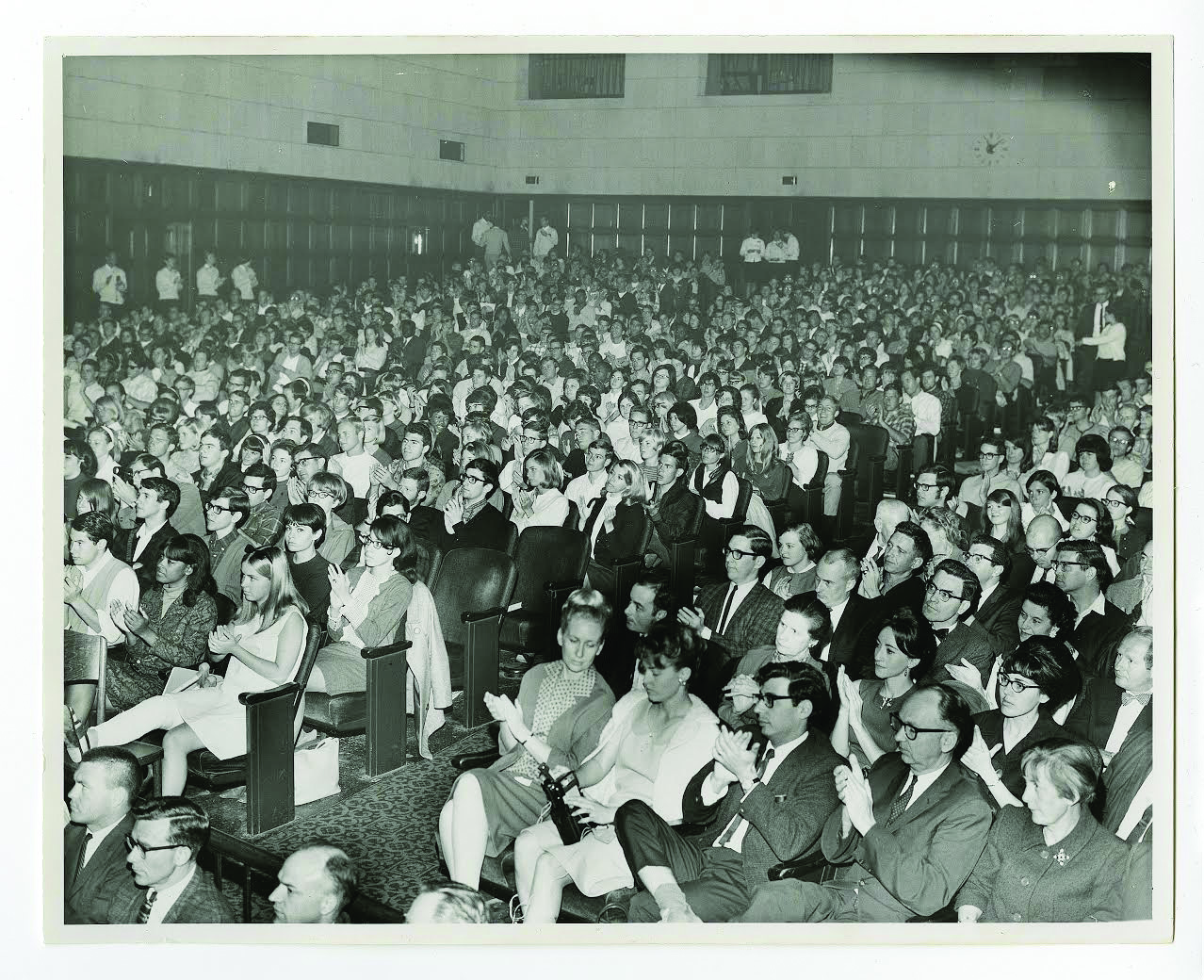During a time when racial discrimination and segregation were common practices in the U.S., civil rights activist the Rev. Dr. Martin Luther King Jr. stood on Thorne Hall’s stage and spoke to over 1,000 members of the Occidental community on what he believed was “The Future of Integration.” April 12, 1967, King addressed the idea that freedom, equality and human dignity should extend to all people in our nation. Half a century later, his words serve as a reminder that King’s imagined future has still not arrived. At 6 p.m., April 12, 2017 in Thorne Hall, Occidental’s Media Arts and Culture department, Special Collections and College Archives, Chief Diversity Officer Rhonda Brown and the Office of Community Engagement sponsored the 50th anniversary of King’s speech, “The Future of Integration.” Yet, this time, the event considered King’s words within a modern context, “The Future of Integration: Reimagined.”
The program began with Occidental’s Glee Club singing James Taylor’s tribute to King, “Shed a Little Light.” Following the Glee performance, students from Sonja Bertucci’s Projects in Documentary Media class screened an hour-long production they created that celebrated King’s legacy while placing his ideas within a modern scope. The film used King’s original speech from Special Collections as the vocal backdrop and added a combination of historical and contemporary clips and images to highlight specific themes of freedom, equality and unity throughout. A brief Q&A following the film screening, providing the the student producers the opportunity to share their artistic choices in the film.
During the screening, King’s words reverberated throughout Thorne Hall while images of men carrying signs that read “I AM A MAN!” followed pictures of segregated water fountains labeled “White” and “Black.” Words like “righteousness,” “justification,” “protection” and “dignity” surfaced in different colors and spurned the spectators to consider the weight and relevance of King’s words.
Pictures of recent Black Lives Matter protests appeared beside images of civil rights protests that took place nearly half a century ago. Photos of the Klu Klux Klan and a lynch mob — groups that retained racist beliefs and were not held accountable for their crimes — preceded those of contemporary examples such as Dylann Roof and George Zimmerman. The students also incorporated images from Occidental’s campus by including photos from the 2015 occupation of the Arthur G. Coons administrative building. There was a strong comparison of the time period in which King delivered his speech with the present day.
As a class, Bertucci’s students visited several destinations throughout the Los Angeles area to choose themes they wanted to highlight in their production, according to Bertucci. They visited locations such as the Simon Rodia State Historic Park and Compton neighborhood. In addition to footage from the City of Compton’s Martin Luther King memorial and the Watts towers, the student producers included clips ranging from Kanye West and Jay-Z in a destroyed Maybach to images that addressed social inequalities regarding different minority groups such as recent Muslim ban protests at airports across the nation.
During the Q&A, Bertucci clarified that they did not want to add anything that would distract the audience from King’s message. Instead, the focus was to emphasize certain aspects of King’s speech that the students either believed to be of vital importance or particularly relevant to today’s political climate. Student producer Maria Flores (senior) shared that there were often times they found King’s words to be overwhelmingly powerful, in these moments they decided to leave the clips in complete darkness and allow the audience the opportunity to create their own meaning and connection with his words.
“This is not just adding visuals to the speech, it is a thoughtful engagement of audio with this text,” Elle Turenne, dean of the office of community engagement, said. “The students are really exposed to it and have a chance to think about it and not only think about how they can use this information but also what they are going to do with it when they hear it, which is the other piece of it.”
When the panelists walked on stage to speak about their experience in the creation of this piece, silence filled the room.
The same words spoken again 50 years later over images from the civil rights movement juxtaposed with images depicting a similar fight for equality today left the audience with a strong message that asked them to contemplate whether progress towards social equality has been made.
“I think people want to say it’s different or better because they don’t want to recognize the shortcomings. We want to say that in 50 years it has to be better, 50 years of smart people wanting to do the right thing, we should be better, and I think we should but I think 50 years ago there were blacks who were doing well and who were getting educated, so more have gotten up, but I don’t know that it’s enough,” Brown said. “I don’t think the problem that King addressed has gone away, I think that it has perhaps just gotten more complex.”
![]()




































